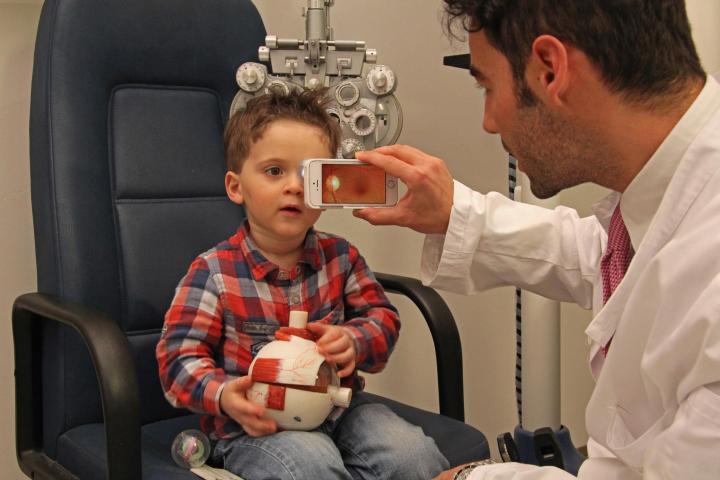
Designed by ophthalmologist Andrea Russo, and tech development firm Si14 SpA, the D-EYE is essentially a tiny ophthalmoscope designed to help change a saddening statistic from the World Health Organization: the fact that, of all the visual impairments people suffer from worldwide, 80 percent can be prevented or cured through access to examinations and care.
The D-EYE lens mounts onto a bumper –a frame that goes around the phone– and links to the accompanying smartphone app, where doctors can control the device and also set/review patient files — a handy built in feature. Once attached, the D-Eye grants a 5-8 degree view of the retina through an undilated pupil, and up to 20 degrees or more if you move it as close to the eye as possible. There, it can show a clear image of the retina, optic disc, macula, fovea, and posterior pole or, in layman’s terms, the inside of the eyeball. Unlike an average opthalmoscope, however, D-EYE displays all images in large format on the doctor’s phone screen, and also records the entire examination so it can be viewed again later on.
Of course, it helps if you have a steady hand. The device works by using the smartphone’s LED and camera using a combination of beam splitters and levers. Using the
The device and app are only set up to work with the newer iPhones and Samsung Galaxies, in part because it requires the bumper which only comes in those sizes. The cameras themselves are 400 EUR, or about $445. The bumper is another 40 EUR, or $45, while the accompanying smartphone app is free. Later this year, the D-EYE company plans to introduce a cloud service for medical professionals that would store and share medical images, the kind of thing that would make it easier for one doctor to send X-rays – or, say, shots of your inner eye — to another.
Aside from designing and manufacturing mobile exam devices and their companion applications, the D-EYE company also develops and runs Platform-as-a-Service systems for healthcare applications. A general theme of their work seems to be enhancing the way we all live, work ,and play; and new tech that makes this easier and more affordable is a means to an end. If you want to see the D-EYE for yourself, the company will be showing off their tech at the American Optometric Association Conference in Seattle, June 25 to 27.
Editors' Recommendations
- Nvidia turns simple text prompts into game-ready 3D models
- For the first time in 30 years, your keyboard is about to be changed
- Amazon’s new Your Books hub will nudge you to buy more books
- iPhone 15 Pro overheating? Apple is (finally) on the case
- Are we about to see ‘the iPhone of artificial intelligence’?


